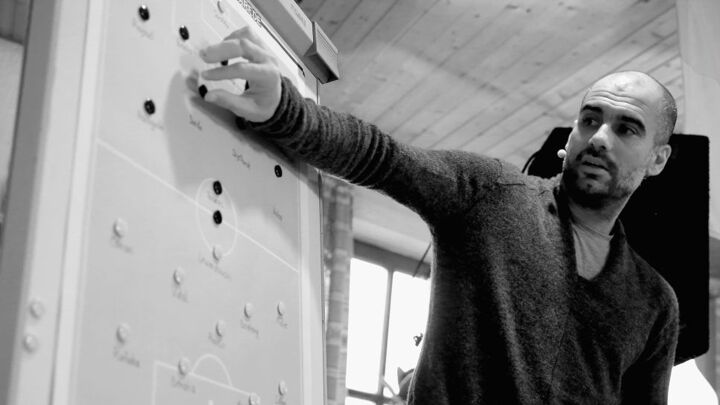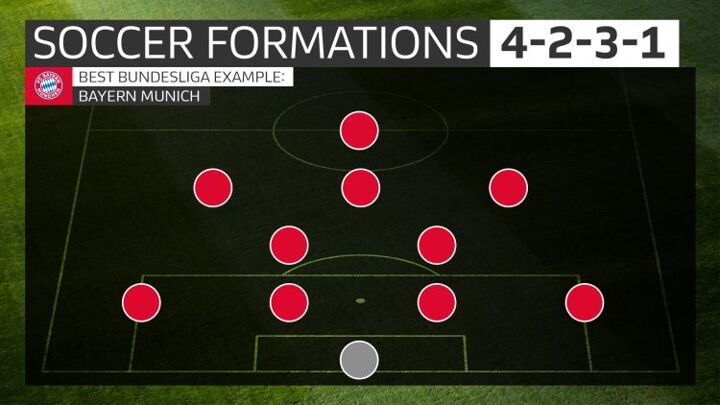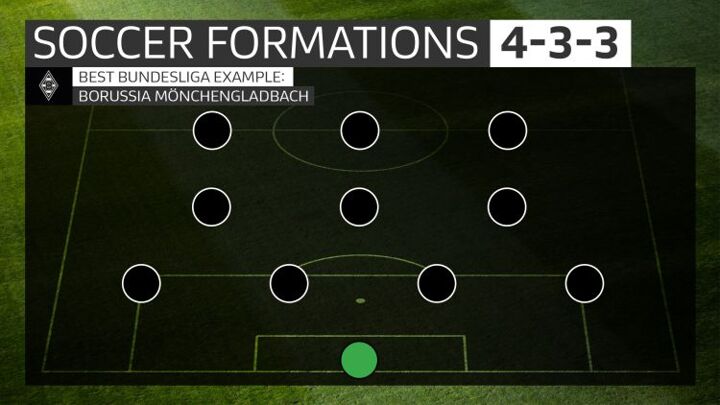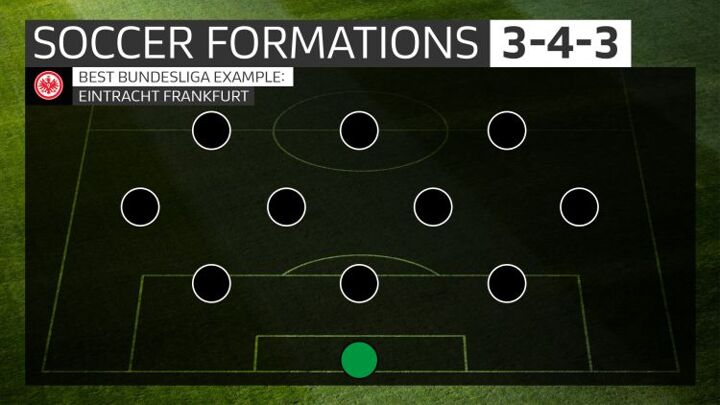We have dug out our white board to explain the most commonly used formations in football so that you can sound like a tactical mastermind. Trying to figure out what a 'holding midfielder' actually holds (if anything)? Don't know a 'flat back four' from a 'three at the back'? Been wondering what a 'wing-back' is and were too afraid to ask?

Don't worry, bundesliga.com has all the answers for you.
Formation: 4-2-3-1

Best Bundesliga example: Bayern Munich
The 4-2-3-1 has become a standard formation not just in Germany, but at elite-level football clubs the world over. Surely the most striking Bundesliga example of recent years was Jupp Heynckes' all-conquering side of 2012/13, who swept aside allcomers to win a historic treble.
Inverted wingers Arjen Robben and Franck Ribery caused havoc out wide – ably assisted by full-backs Philipp Lahm and David Alaba – and scored no fewer than 24 goals between them in all competitions. Heynckes had three effective strikers at his disposal: Mario Mandzukic (22 goals), Mario Gomez (19) and Claudio Pizarro (13), while versatile forward Thomas Müller outdid them all from a No.10 position or further out wide (23).
Toni Kroos was the outstanding creative player in midfield, and Bastian Schweinsteiger, Javi Martinez and Luiz Gustavo took it in turns mopping up in front of the defence as the Bavarians conceded just 18 goals in 34 games, storming to the Bundesliga crown by 25 points and going on to triumph in the UEFA Champions League and DFB Cup.
Other high-profile examples include Borussia Dortmund's title-winning sides under Jürgen Klopp in 2011 and 2012 and Germany's 2014 world champions.
Formation: 4-4-2

Best Bundesliga example: RB Leipzig
With shades of Wolfsburg's full-throttle title winners of 2009, Leipzig burst onto the Bundesliga scene in 2016/17, employing football's most timeless formation to devastating effect on their way to second place – not bad for a maiden top-flight campaign! Ralph Hasenhüttl's side were able to rely on the lightning-quick pace of forward Timo Werner, who notched no fewer than 21 goals in the Bundesliga.

Wingers Marcel Sabitzer and Emil Forsberg also did their fair share from out wide, with both scoring eight goals and the latter providing a league-high 19 assists. Crucially, Hasenhüttl found stability in the middle as he had any two of Naby Keita, Diego Demme and Stefan Ilsanker anchoring the midfield, with the former also chipping in with eight goals. That balance was reflected in the stats as Leipzig finished ahead of Dortmund with the Bundesliga's third-best attack and third-best defence.
Formation: 4-3-3

Best Bundesliga example: Borussia Mönchengladbach
The Foals have been fans of this set-up since the days of Lucien Favre at Borussia-Park when Marco Reus, Mike Hanke and Juan Arango ran riot as a complementary front three. The rampaging trio spearheading their charge is now Thorgan Hazard, Alassane Plea and Lars Stindl, and the results could potentially be even better under Dieter Hecking.
Effective through the middle in Stindl's injury-enforced absence, Plea's switch to the left did not blunt the side's cutting edge with Gladbach registering more than two goals a game on average in the first 11 matches of the 2018/19 season.
Jonas Hofmann and Florian Neuhaus plough forward to create an overwhelming attacking force while full-backs Michael Lang and Oscar Wendt provide width and options going forward in addition to their 'day jobs' at the back. In front of the defence, Tobias Strobl has excelled in snuffing out the danger, and goalkeeper Yann Sommer has stopped virtually everything thrown at him.
Formation: 3-5-2

Best Bundesliga example: Hoffenheim
The Sinsheim outfit have perfected the system that took them to a best-ever third-place finish in 2017/18. Captain Kevin Vogt, at the heart of the back three, was key with his positioning and ability to play the ball out of defence crucial to the side with and without the ball. While Kevin Akpoguma, Havard Nordtveit, Benjamin Hübner and Ermin Bicakcic provided sturdy options for Nagelsmann alongside Vogt, Pavel Kaderabek and Nico Schulz revelled in the wing-back role that gave them just as much licence to spring forward as demanded of them to get back and defend when the ball was lost.

They found themselves more often on the front foot though as only champions Bayern Munich outdid the team's tally of 66 goals. Mark Uth provided 14 of those as part of a productive front two with Andrej Kramaric (13 goals). On-loan Bayern man Serge Gnabry chipped in too (10 goals) with the likes of Florian Grillitsch, Lukas Rupp and Steven Zuber providing the energy and ball-winning grit in midfield to complement the guile of Kerim Demirbay and Nadiem Amiri.
Formation: 3-4-3

Best Bundesliga example: Eintracht Frankfurt
Only early 2018/19 season pacesetters Borussia Dortmund scored more Bundesliga goals before the November international break than Adi Hütter's high-flying Eagles. Ante Rebic's return to fitness gave Hütter the option of playing his first-choice front three with the Croatia international joining Luka Jovic in playing either side of Sebastien Haller, whose physique and selflessness has made the Frenchman an extremely effective focal point in attack, and the three had a hand in all but two of their team's 26 goals in the first 11 matches of the league season.
The support at both ends of the pitch from wide positions provided by Filip Kostic and Danny Da Costa was invaluable with Gelson Fernandes and Jonathan de Guzman solid in central midfield — affording the back three a shield — as well as possessing more than sufficient ability to use the ball efficiently and effectively.
The use of Makoto Hasebe, a hardworking midfielder by trade, as one of the three defenders upgraded distribution from the back with the likes of David Abraham and Evan N'Dicka an able supporting cast while Kevin Trapp was a reliable last line of defence.
